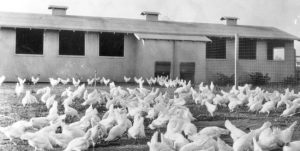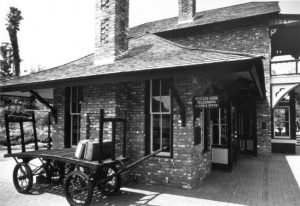
Arcadia was founded by Elias Jackson “Lucky” Baldwin in 1903. He was the Southern California city’s first mayor, and the direction the city took in its early development was under his watchful eye and approval.
Arcadia was known as being ‘wide open,’ with entertainment available 24 hours a day, seven days a week. Its reputation was of lawlessness and political turmoil.
The city’s second decade was one of change, both in reputation and real estate development. Large land holdings were subdivided and, on the smaller lots, poultry raising became the largest business. Many large poultry ranches supplied eggs and meat to the Los Angeles markets. City streets were graded and paved, street lights were erected and the sleepy city took on the look of an urban community.
Alcohol was outlawed, saloons were closed, retail business was encouraged, and a bank opened. Arcadians, however had to go to Pasadena or Monrovia for necessities. Toward the end of the World War I, Ross Field, the ‘Balloon School,’ was established in the center of Arcadia. This brought in thousands of servicemen and strained the resources of Arcadia, notably water and police protection.
In the third decade, Arcadia became known as a poultry-raising capital, and poultry men had significant influence in the policy-making and civic decisions of the city. Ten to 12 hatcheries were located within the city limits, as well as a cannery. The businesses along First Avenue slowly developed and spread to Huntington Drive. Business began in West Arcadia along Baldwin Avenue, and this gave competition to the ‘downtown’ merchants.
Arcadia developed in a random way, with businesses scattered widely and without a plan. Eventually, a Planning Commission was established in 1925, but Arcadia never had a significant business district until after the Second World War and the ‘mall’ came into existence.
Fire and flood control were in the forefront of public concern for many years, and plans were reviewed with Los Angeles County to curtail the ravages of periodic flooding. In 1927 a dam was constructed in Santa Anita Canyon to control the flood-waters. Arcadia regularly contributed its funds for fire breaks in the mountains behind the city. It wasn’t until the late 1950s that flood control was dealt with effectively.


